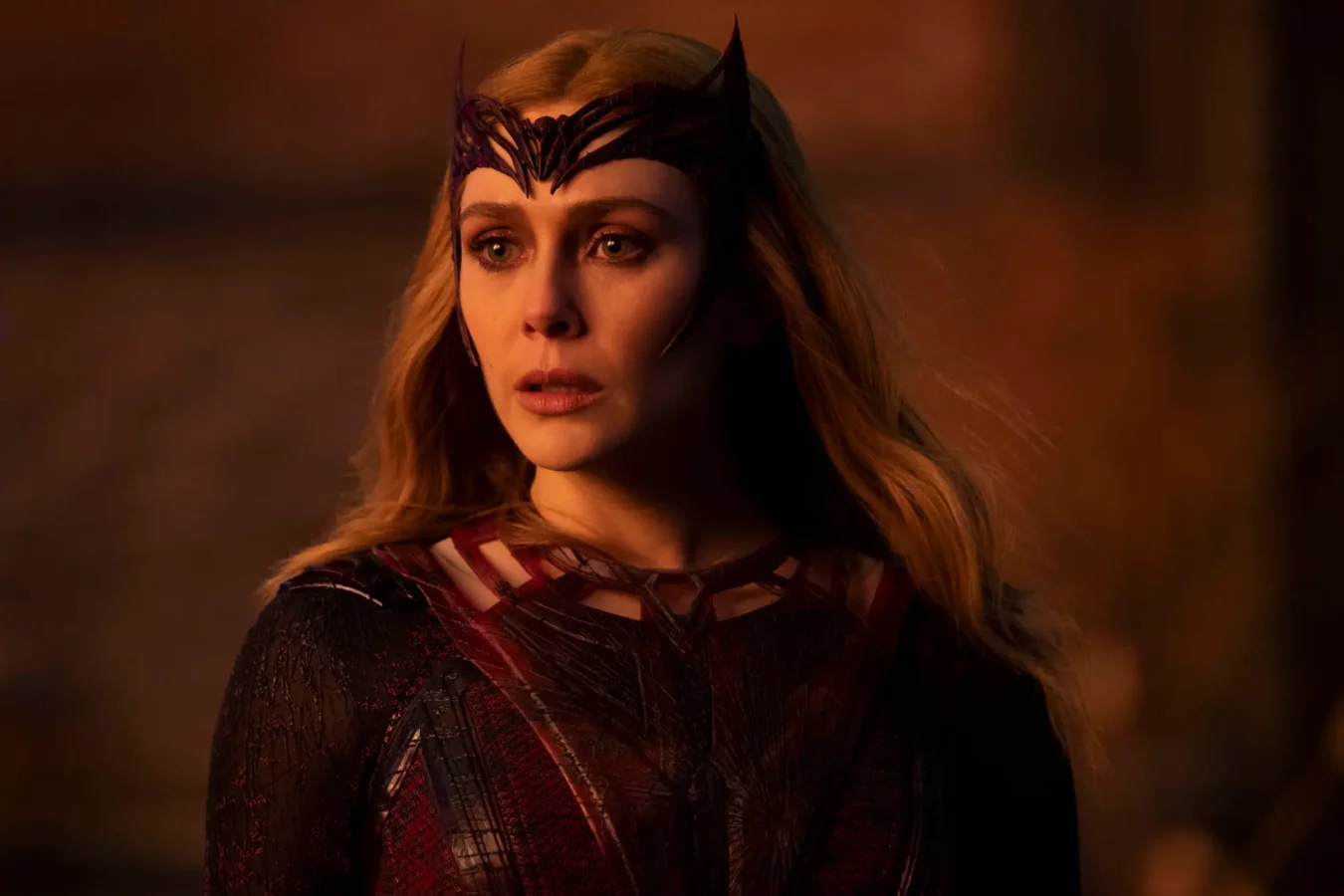Doctor Strange in the Multiverse of Madness or That Scarlet Witch Movie We’ve Been Waiting For finally has cemented its place in the Marvel canon. Releasing over a year after WandaVision‘s premiere, this movie had a lot to live up to. But did it? Well, that’s a complicated question.
** Spoilers below for Doctor Strange in the Multiverse of Madness **
It’s impossible to judge Multiverse of Madness‘ success without considering WandaVision. The series portrays Wanda (Elizabeth Olson) in a significantly different light than the movie, taking a deep dive into Wanda’s mind as she shuts out the truth of the loss of her love, Vision, and during the process, manifesting her children. It appears like she has these children in almost every universe, our reality of 616 being an anomaly. Her power is so vast she can connect to these other universes without even knowing it. WandaVision shows this power and even how she can use it when she exhibits bursts of anger, an emotion we later see with less restraint in the Multiverse of Madness.
The problem is that this arc for The Scarlet Witch seems too cyclical in nature. Wanda experiences grief, she seeks for a way to end her pain while endangering (or killing) in the process, she realizes what she’s done and attempts to atone. Sometimes pain works like that — progress isn’t necessarily a straight line. But when we’ve sat on Wanda’s journey for a year without new content, odds are that her journey’s become a bit romanticized.
Not to mention that the release of WandaVision was probably one of the most unique experiences in the MCU so far, and quite honestly, my favorite. This series convinced plenty of viewers to go back and rewatch her scenes or films, and maybe even pay attention to her and Vision’s story for the first time. Just like Wanda ran head first into denial about what Thanos took from her, I ran head first into denial about Wanda being the bad guy.
The Scarlet Witch is such a great antagonist, so who cares that she falls into the typical Marvel martyr role? Her dialogue is ominous, yet entertaining, as her words create reality, she knows how to strut like a villain (an ability Cate Blanchett perfected in Thor: Ragnarok), and well, she looks really really good. Director Sam Raimi utilizes her powers perfectly in a horrific pursuit of a young girl, America Chavez (Xochitl Gomez), who can open portals to other universes, ones where her children exist. This leads us to our next issue: the novice in distress.
America Chavez also has a legacy to uphold. Chavez is introduced into the MCU as a lost girl running through the multiverse from a monster, unable to control her powers. Even her backstory is briefly revealed when she watches a memory of her first portal sucking in her two moms, their ultimate fates unknown.
These changes aren’t for the better — they take away her agency. In the comics, her moms sacrifice themselves to protect their reality, and the teen travels to different universes to try to prove herself. Chavez is also popular in the comics due to providing LGBTQ+ representation as a lesbian. There isn’t much evidence of this in the movie either — but at least she has two moms, right? That’s a step up from Joe Russo at Thanos therapy in Avengers: Endgame. It’s sad to say, but America makes the plot possible and serves as someone for Stephen Strange (Benedict Cumberbatch) to save, falling into tropes yet again.
Advertisement
Christine isn’t much better. While Christine-838 is an intriguing character with a way more interesting dynamic with both her Stephen and ours, she falls into the love interest archetype. Even worse is 626-Christine’s inclusion which amounts to little more than a reminder to the audience that Strange didn’t get the girl. She reminds the audience of his ego and helps play to the idea of Strange being the individual to fear. That’s it. 828-Christine is utilized in a more exciting way than the main Christine, working at the Baxter Foundation and giving insight into who 828-Strange was. Which wasn’t great. As cool as it is to explore the idea of the typical white male hero being a destructive entity to fear is, this character revolves around Strange completely and it’s predictable. It doesn’t help that Strange is one of Marvel’s most boring protagonists.
Once again, for almost every flaw in Multiverse of Madness, there’s something else to love. A lot of these things are thanks to Raimi. His indistinguishable mark is visible throughout the film. With a horror-lite feel, it’s great for fans who don’t want to dive completely into the genre but rather have their superhero films tinted with it. The jumps in this film are pretty much calculated perfectly to help descend a beloved character into the depths that she may not come back from — Wanda’s takeout of the Illuminati? Brutal. And even though the hint for Strange’s reanimation of his doppelganger’s corpse is right there, this fun sequence didn’t click for me until right up before it happened. Another nice touch? The callback to Wanda’s origins in the MCU.
These artistic choices, combined with some gut-wrenching emotional beats from Olsen, will likely keep this movie on my mind for the weeks to come, as I love fandom and film discourse through and through. There were a lot of hopes and expectations put onto this movie — probably mostly thanks to the amount of hype and speculation (and surplus amount of time) over the past year. But even though this movie left me wondering what to care about most in a Marvel movie, I do know that the next time the Scarlet Witch calls, I will be coming.
Doctor Strange in the Multiverse of Madness is in theaters now. Watch the trailer below.
Advertisement
Advertisement
